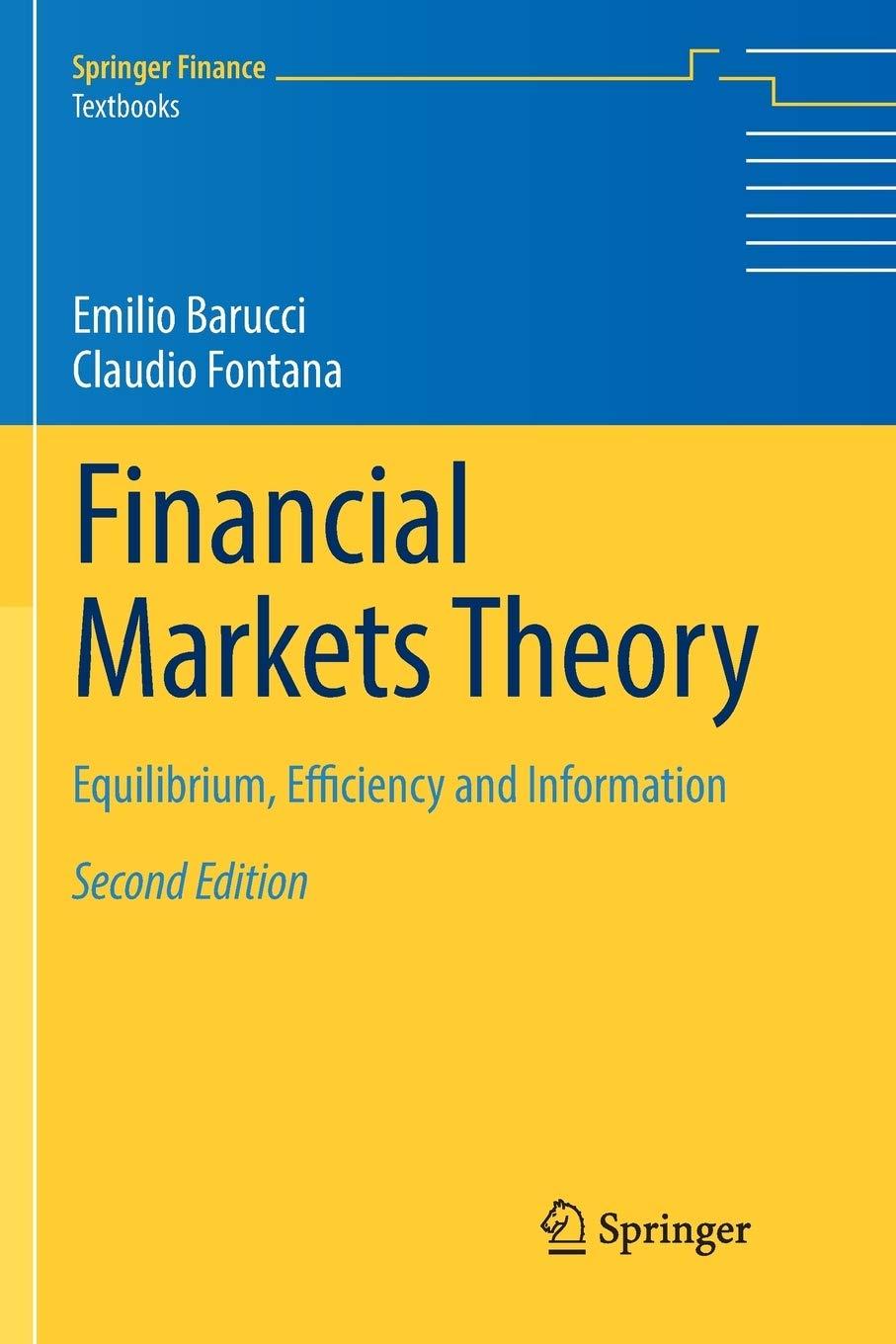Consider an exchange economy with two goods, two agents and two possible states of the world. The
Question:
Consider an exchange economy with two goods, two agents and two possible states of the world. The preference relation of with \(x_{n}^{i}(\omega)\) denoting the quantity of good \(n=1,2\) consumed by agent \(i\) in correspondence of the state of the world \(\omega\). The initial endowments of the agents are given by[\begin{aligned}&e_{1}^{i}\left(\omega_{1}\right)=e_{1}^{i}\left(\omega_{2}\right)=:e_{1}^{i}>0, \\& e_{2}^{i}\left(\omega_{1}\right)=e_{2}^{i}\left(\omega_{2}\right)=: e_{2}^{i}>0, \quad \text { for } i=1,2,\end{aligned}
i.e., the endowments do not depend on \(\omega\). Suppose that (\mathbb{P}\left(\omega_{1}\right)=\pi\), with \(\pi \in(0,1)\). At date \(t=0\), the first agent receives a private signal \(\tilde{y}^{1}\) which perfectly reveals the state of the world, while the second agent receives an uninformative signal. At date \(t=0\) (non-contingent) markets for the two consumption goods are open. Note that, in the present setting, markets are incomplete.
(i) Suppose that the equilibrium prices of the two goods at date \(t=0\) are normalized to \(\left(p^{*}, 1-p^{*}\right)\). Show that the price \(p^{*}\) corresponding to a competitive (Arrow-Debreu) equilibrium at date \(t=0\) is given by

where \(\bar{\alpha}^{2}:=\pi \alpha_{\omega_{1}}^{2}+(1-\pi) \alpha_{\omega_{2}}^{2}\).
(ii) Deduce that, if \(p^{*}\left(\omega_{1}\right)=p^{*}\left(\omega_{2}\right)\), then (8.44) corresponds to an Arrow-Debreu equilibrium of the economy, where prices do not reveal any information. On the contrary, if \(p^{*}\left(\omega_{1}\right) eq p^{*}\left(\omega_{2}\right)\), then there cannot exist an Arrow-Debreu equilibrium and the only candidate for an equilibrium of the economy is a Green-Lucas equilibrium.
(iii) Show that, if the uninformed agent extracts information from the observation of market prices, then the equilibrium prices associated to a Green-Lucas equilibrium are characterized by

(iv) Deduce that, if \(\tilde{p}^{*}\left(\omega_{1}\right) eq \tilde{p}^{*}\left(\omega_{2}\right)\), then the price functional obtained in part (iii) corresponds indeed to a Green-Lucas equilibrium price functional. However, if \(p^{*}\left(\omega_{1}\right) eq p^{*}\left(\omega_{2}\right)\) and \(\tilde{p}^{*}\left(\omega_{1}\right)=\tilde{p}^{*}\left(\omega_{2}\right)\), then the economy admits no GreenLucas equilibrium.
Step by Step Answer:

Financial Markets Theory Equilibrium Efficiency And Information
ISBN: 9781447174042
2nd Edition
Authors: Emilio Barucci, Claudio Fontana





